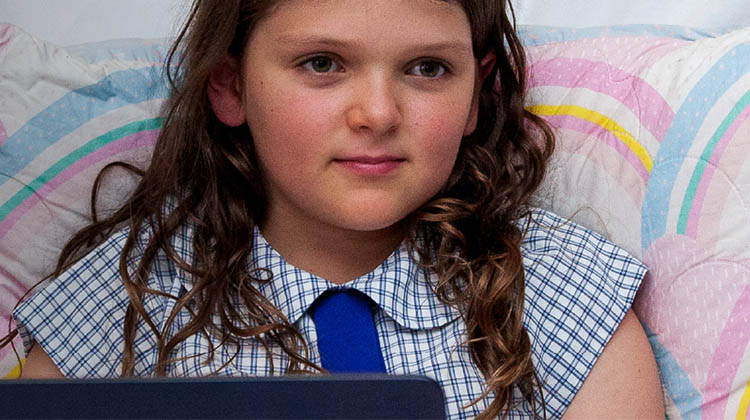School Can - Breaking the Barriers to School Attendance

A deep reluctance to attend school, also known as ‘school can’t’, has a range of complex causes including medical and mental health conditions and is said to be affecting a growing number of students in Australia, estimated to be heading into the hundreds of thousands. Often called ‘school refusal’ and mistaken for truancy or bad behaviour, ‘school can’t’ has serious implications for student wellbeing and requires new thinking and innovation.
‘School can’t’ is not a matter of choice, truancy, or poor behaviour - nor is it a question of ‘good’ or ‘bad’ children. Instead, it is the result of a physical, cognitive, social, emotional and/or mental wellbeing crisis that requires a compassionate and tailored approach.
For children experiencing ‘school can’t’, a combination of overwhelming sensory stimulation, anxiety, and stress - and even serious illness - can mean that an in-person school environment is no longer a place they can be.
This challenge of separation from school is then exacerbated by the detrimental effects of prolonged isolation, creating a vicious cycle that can quickly spin out of control. The evidence shows that school isolation results in a confluence of profoundly detrimental physical, cognitive, social, emotional, and/or mental health consequences for students - now and into adulthood.
The road to recovery from 'school can't' can be a long one, but a new generation of innovative tech is helping to bridge the gap for some students by providing an ongoing virtual student presence in their school based on evidence that continuous connection supports the young person with transitions from ‘can’t’ to ‘can’. Crucially, the technology provides what all students should have: safety, wellbeing and learning in their school community.
Take Owen*, a Year 9 student who developed anxiety around going to school after covid. The effects of Owen’s ASD Level 3 and anxiety had escalated to the point where he could not leave his house, let alone attend school.
Despite support from his school, coaxing from family - and extensive health interventions from psychologists, dieticians, occupational therapists, and a psychiatrist - Owen still can't physically attend school. Bids to get Owen back only entrenched his anxieties and widened the divide, and he is now nonverbal.
Owen has missed more than a year of school and lost contact with his school community, teachers, and friends, increasing his social isolation and separating him from his everyday school life.
MissingSchool's telepresence robot service was sought as a last resort. MissingSchool’s robot allows Owen to have a physical presence in the classroom, while remaining at home. The robot allows him to operate and move within the school in real-time from home.
Owen can see and hear his teachers, share his work for review, receive curriculum-aligned instruction like his peers, experience meaningful interactions, and participate in as much of the school day as possible. Seven months into telepresence attendance, Owen's mum said: "It has changed him; he jumps up, ready to get on the robot!"
It’s unlikely that school systems can fix all causes of ‘school can't’. There is hope, however, in the fact that our schools may be able to urgently and systemically support physical, cognitive, social, emotional and mental safety by easing the consequences of school isolation through assistive telepresence technology.
Including ‘school can’t’ kids in their school life is not merely nice to have - our legislation says that education should continue and must be provided equitably for every student. The Disability Standards for Education sets out provisions through every school in Australia for the inclusion of kids with disability, physical and mental health needs, ensuring they can access and participate in education in the same way as their peers.
We know that telepresence works in the classroom, as we saw it happen on a national and international scale during the pandemic lockdowns. Instead of simply reverting back to school as usual, it’s critical that we keep school telepresence as an option for those, like Owen, who need it the most. Another way to look at it is that telepresence is really part of a 21st century education, preparing students in all sorts of ways for the future of work.
If you’re considering implementing telepresence robots or videoconferencing technology in your school, there are a few tips that can help. Firstly, nominating a ‘chaperone’ or ‘buddy’ can help to assist setup of the telepresence equipment in the environment, and making sure it is charged and ready.
Consider where to place the technology in the classroom so that the remote student has a good view of the teacher and instructional materials, without blocking other students’ view of the same materials. Similarly, it’s important to consider how positioning optimises the way sound is handled by the technology's microphone and audio systems.
Finally, provide frequent opportunities for students to interact one-on-one or in small group settings with the technology, as this can help encourage acceptance of telepresence as “business as usual” in the classroom which promotes the inclusion of the remote student.
Missing School has the aim of scaling See-Be technology - which spans robots, videoconferencing and more - across schools in Australia by 2025. Scaling use of telepresence technology in schools around Australia will ensure that every child is seen and heard, regardless of their health or wellbeing status.
*Owen’s name has been changed to preserve his privacy.
Megan Gilmour is the CEO and co-founder of MissingSchool, an Australian non-profit organisation that helps seriously sick children stay connected to school. Through MissingSchool, she has been able to collaborate with hospitals, schools, and policymakers to drive action on the challenges faced by seriously ill children and their families. Megan has studied solutions in six countries and led the organisation to develop extensive resources and a unique service to help children stay connected to their learning, peers, and schools while they are undergoing medical treatment. https://www.missingschool.org.au/